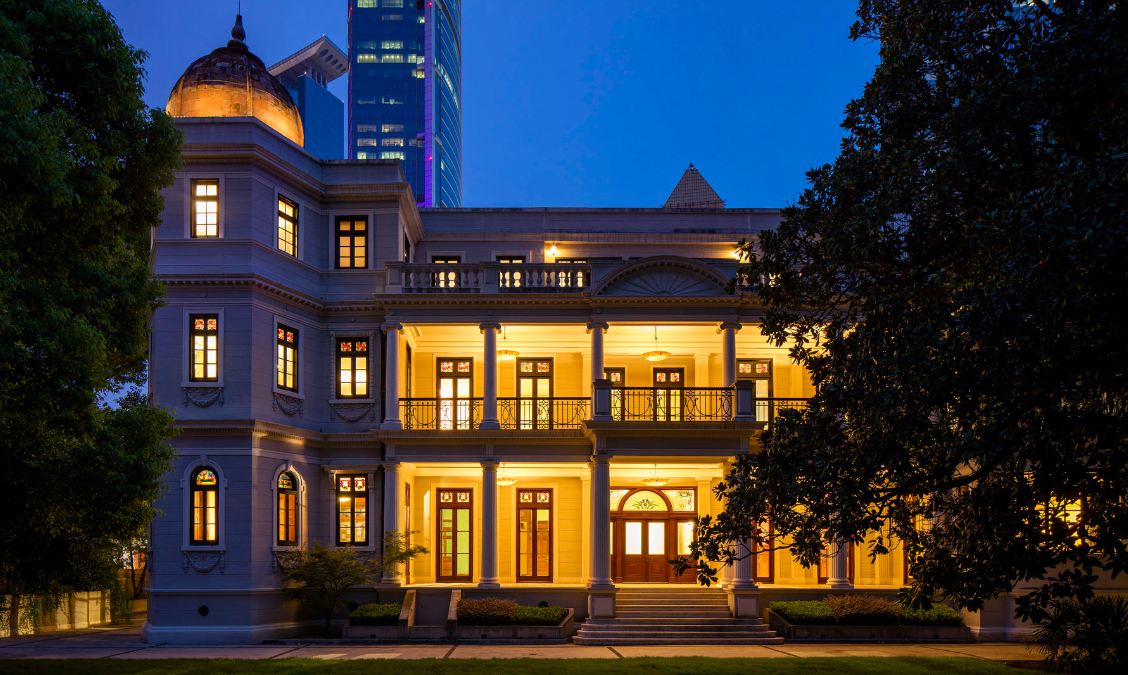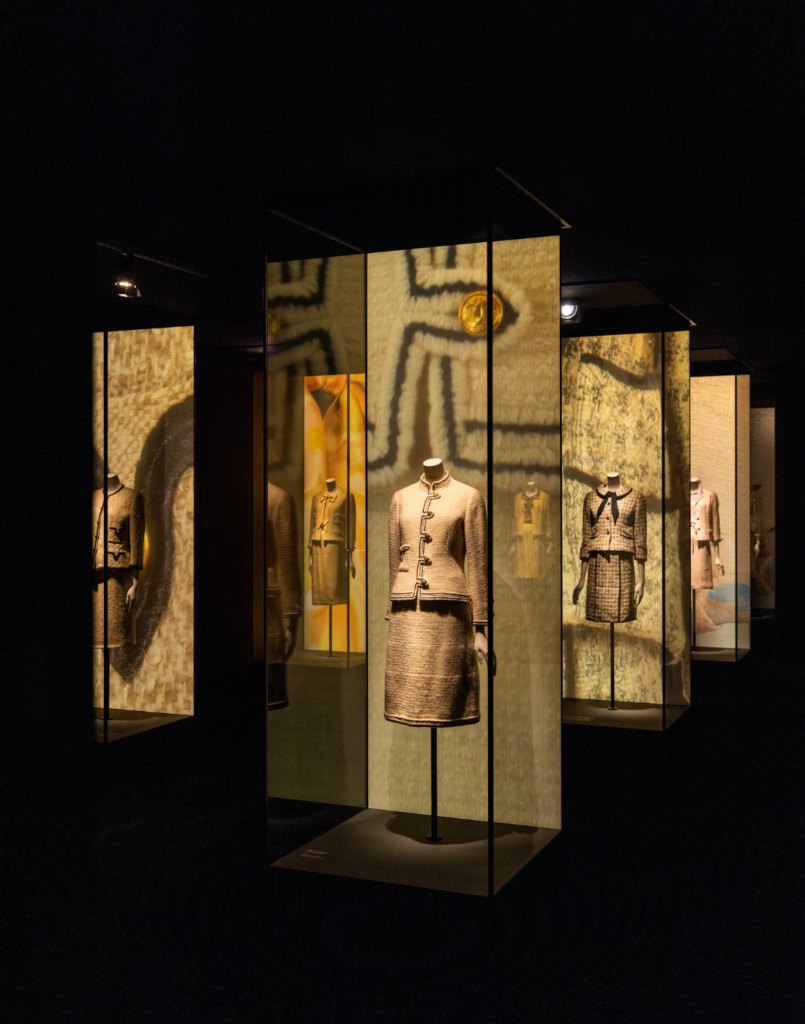As China’s luxury market cools, brands are doubling down on Shanghai — not simply for novelty, but for its ability to turn brand presence into cultural relevance.

The industry’s deepening focus on Shanghai reflects a strategic reaffirmation of the city as they signal more than just market confidence. The fashion industry is shifting its gaze from Beijing to Shanghai — a city that’s fast emerging as the cultural and commercial heart of luxury in central Asia. From Dior’s extravagant 2021 pre-fall show at Shanghai’s Long Museum, Christian Dior Haute Couture Spring/Summer 2018 show at Minsheng Art Wharf to Louis Vuitton’s high-profile spring 2021 menswear presentation under the direction of the late Virgil Abloh, Shanghai is (and always has been) treated less like a sartorial layover and more like a global fashion capital.
A Shift Away from Beijing

While Beijing remains China’s political centre, its influence over the fashion landscape has notably diminished. Compared to Shanghai’s dynamic creative output and faster retail recovery, Beijing’s luxury market appears more conservative and slower-moving. Fewer international activations and less cultural momentum have led major Maisons to prioritise Shanghai as their Chinese stronghold. This shift marks a broader realignment within the industry, where cultural and creative capital — not political power — increasingly dictates brand strategy and regional investment.
China’s economic growth decelerated to 4.5 percent this year, down from 5.2 percent in 2023 — reflecting broader macroeconomic uncertainty. The property sector — which contributes approximately 30 percent of China’s GDP — saw a 15 percent drop in investment. This contraction resulted in a negative wealth effect, eroding discretionary income among affluent households and leading to a significant shift in purchasing behaviour. Mainland sales of personal luxury goods dropped by 1 to 3 percent in the first quarter of the year, according to Bain-Altagamma’s Luxury Goods Worldwide Market Study. Analysts at HSBC revised their luxury market growth forecast downward, predicting just 2.8 percent growth in 2024 — compared to their earlier estimate of 5.5 percent. However, amid this economic softening, Shanghai has emerged as a powerful outlier — a city increasingly defined not just by its consumption, but by its cultural capital. As luxury brands recalibrate their China strategies, many are turning to Shanghai’s thriving art, design and gastronomy scenes to create deeper, more immersive connections with younger consumers.
Shanghai’s Evolving Luxury Landscape

China’s dominance in luxury spending over the past decade was largely driven by an expanding middle class and rising disposable incomes. However, amid a more cautious economic climate and a national slowdown in luxury consumption, brands are recalibrating their strategies. Instead of relying purely on widespread consumer spending, they are targeting cities like Shanghai, where they are banking on the consumption of luxury to remain resilient. Shanghai offers a highly concentrated market of globally connected luxury consumers, making it the perfect stage for brands seeking sustainable growth.
Case in point, Prada is set to open “Mi Shang” — its first stand-alone restaurant in Asia — located within the historic Rong Zhai residence in Shanghai. Co-designed by renowned filmmaker Wong Kar Wai, the restaurant draws inspiration from his iconic cinematic style, evoking themes of longing and nostalgia through a striking interplay of mirrors and contrasting décor, reminiscent of films like “In the Mood for Love”.

The name “Mi Shang” — meaning “to be obsessed with” — reflects the sensory experience Prada aims to create within the restored 1918 mansion, which the brand meticulously renovated over six years. Rong Zhai will now also serve as a hub for Prada’s cultural activations in China, with the restaurant occupying the second floor. More than just a brand extension, “Mi Shang” represents Prada’s answer to a generational shift in luxury consumption.
With Gen Z and millennial consumers in China increasingly prioritising experiences and brand culture over traditional retail, luxury dining is emerging as a critical new frontier. According to recent consumer studies, younger shoppers are willing to invest in immersive brand environments that offer emotional and cultural engagement. As the Jing Daily reports, Prada’s “Mi Shang” is already generating buzz on Chinese social platforms like Xiaohongshu — where the hashtag “#PradaRongZhai” has exceeded 10 million views.
“Mi Shang” positions Prada at the intersection of fashion, art and lifestyle. In a market where economic headwinds have softened discretionary spending, this pivot towards experiential luxury offers a savvy way for brands to maintain cultural relevance and deepen consumer loyalty. Located at No. 186, North Shaanxi Road, Jing’an District, Shanghai, Mi Shang will be open daily from 10am to 10pm, offering a full range of culinary experiences — from coffee and afternoon tea to fine dining and cocktails. For reservations, call 021-22180388 or email [email protected].

Shanghai Retains Status as China’s Creative Capital
Beyond its consumer base, Shanghai’s thriving creative scene is increasingly shaping the future of both art and fashion. The city has become a magnet for emerging designers, underground artists, stylists and musicians whose influence now extends beyond China’s borders. International fashion houses are forging partnerships with Shanghai-based creatives to craft campaigns, capsule collections and event activations that aim to provide luxury brands with a critical edge in storytelling, making Shanghai not just a market to sell in, but a culture to invest in.

Adding to Shanghai’s growing reputation as a cultural powerhouse is the Modern Art Museum (MAM) Shanghai. In 2024, the Modern Art Museum (MAM) Shanghai cemented its standing as one of Asia’s most influential cultural institutions, delivering a blockbuster year of exhibitions that drew global attention and positioned the city as a nexus of creative capital. The museum’s programming included retrospectives and immersive showcases by international icons such as David Hockney, Marina Abramović and Robyn Ward, alongside groundbreaking contemporary works by Chinese artists, creating a dialogue between East and West that resonated with Shanghai’s increasingly cosmopolitan audience.
These exhibitions were more than just cultural moments — they served as a strategic backdrop for luxury’s intensifying courtship with Shanghai’s art scene. As global Maisons seek new modes of engagement beyond traditional retail, MAM’s cross-disciplinary approach — blending visual art, performance, technology and fashion — aligns with the industry’s push toward experiential branding.

Read More: MAM Shanghai Poised to Become an Artist’s Haven in 2024
Shanghai’s Demographic Powerhouse
Shanghai’s Gen Z and millennial demographics are redefining what luxury means. Digital natives with global mindsets, they expect brands to offer more than status symbols — they demand authenticity, cultural relevance and experiential depth. Brands like Balenciaga, Valentino and Loewe are responding not only by opening sprawling flagship stores in prestige locations like Plaza 66, but also by localising campaigns, collaborating with homegrown creators and designing retail concepts tailored specifically to Shanghai’s unique sensibilities.
Read More: Luxury Brands Leverage on Southeast Asia to Defy Slowdown


In 2024, Shanghai reinforced its standing as a global fashion and cultural capital with the arrival of Gabrielle Chanel. Fashion Manifesto at the Power Station of Art. As Chanel’s first dedicated retrospective of its founder in China — following acclaimed runs in Paris and London — the decision to stage the exhibition in Shanghai reflected the city’s growing importance as a strategic luxury hub. With its vibrant art scene, sophisticated consumer base and expanding influence in the global fashion economy, Shanghai offered the ideal backdrop for the Maison to celebrate its heritage while deepening cultural ties with the next generation of Chinese luxury consumers.
Read More: A Look At The “Gabrielle Chanel. Fashion Manifesto” Retrospective In Shanghai


Furthermore, Shanghai’s “First in Shanghai” strategy is rapidly elevating the city’s global fashion status through bold financial incentives and a clear mandate to attract first-in-China and Asia retail debuts, headline-making shows and brand exhibitions. In recent months, luxury houses like Balenciaga, Louis Vuitton, Gucci and Hermès have staged landmark events in the city, with Balenciaga’s Spring 2025 show drawing over 96 million online viewers. These major openings and events include Loewe’s first public exhibition “Crafted World”, the debut of China’s first Supreme store, a Gucci pop-up and the return of Hermès’ men’s show.
As Jing Daily’s Head of Data, Avery Booker reports, brands opening their first Asia stores in Shanghai can receive up to 1.2 million RMB, with additional subsidies for internationally promoted activations. Districts like Jing’an and Xuhui are also offering multi-million RMB funding for brand-building and night-time economy stimulation. The dual aim: boost Shanghai’s global prestige while driving local economic impact and asserting the city’s dominance over regional competitors like Beijing and Hong Kong.
The luxury industry’s increasing focus on Shanghai signals more than just market confidence; it represents a strategic reaffirmation of the city as the future epicentre of fashion influence and investment.
For more on the latest in luxury business reads, click here.

.jpg) 5 hours ago
3
5 hours ago
3
 English (US)
English (US)